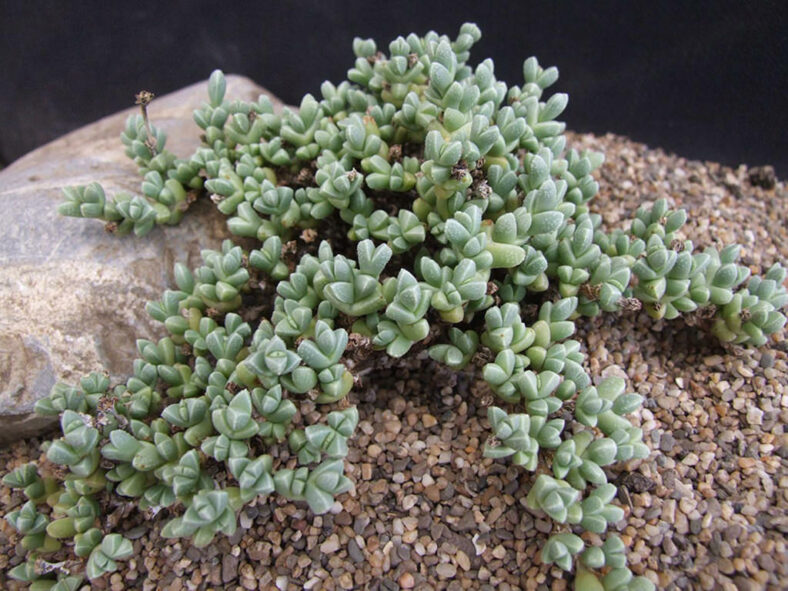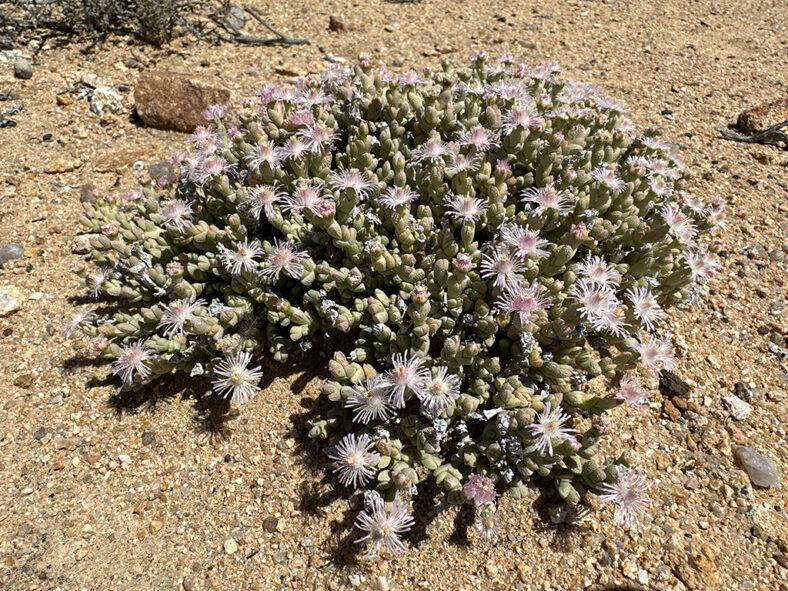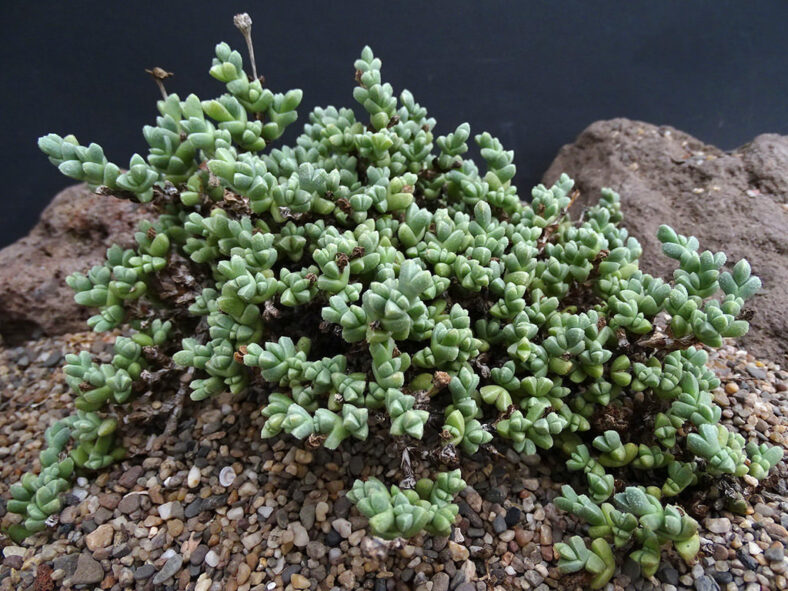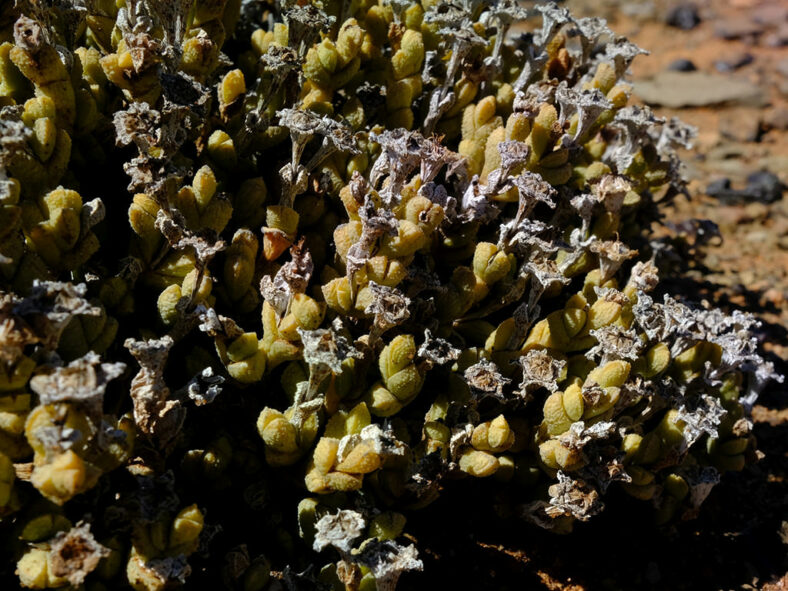Antimima elevata was first published as Ruschia elevata by Louisa Bolus in "Notes Mesembryanthemum 2 (1931)."
Scientific Name
Antimima elevata (L.Bolus) H.E.K.Hartmann
Synonym(s)
Ruschia elevata
Scientific Classification
Family: Aizoaceae
Subfamily: Ruschioideae
Tribe: Ruschieae
Genus: Antimima
Etymology
The specific epithet "elevata" (pronounced ell-eh-VAY-tuh) means "raised, elevated" and refers to the elevations on the epidermis of the leaves of this species.
Origin
Antimima elevata is native to South Africa. It grows in crevices in granite in Namaqualand, Northern Cape.
Description
Antimima elevata is a diffusely branched succulent shrub with short branches that bear pairs of fleshy, almost equal leaves. It can grow up to 2.4 inches (6 cm) tall. The leaves are triangular in cross-section and can measure up to 0.8 inches (2 cm) long and 0.15 inches (0.4 cm) broad. They are dirty gray-green and covered with papillae, resulting in a rough surface.
During the spring, Antimima elevata produces solitary flowers with narrow pink petals, white staminodes, and yellow anthers. The flowers can reach a diameter of 0.5 inches (1.2 cm) and appear on pedicels that can grow up to 1 inch (2.5 cm) long. The fruit are 5-locular capsules with high rims.

How to Grow and Care for Antimima elevata
Light: Antimima elevata requires bright light but not too much direct sunlight. So, a windowsill that receives 4 to 5 hours of direct sunlight in the morning and partial shade in the afternoon will be a perfect spot for indoor growing.
Soil: The plant thrives in porous soil, allowing the water to drain away quickly. Therefore, use commercial soil for succulents or make your own well-draining mix.
Temperature: High temperatures are not a problem as long as there is plenty of fresh air, but this plant is not cold-hardy. It grows best in USDA Plant Hardiness Zones 9b to 11b, with average minimum winter temperatures ranging from 25 to 50 °F (-3.9 to 10 °C).
Watering: To keep your Antimima elevata healthy, it is most important to know when, how much, and how often to water it. During the dormant period, usually in summer, the plant requires little or no water. From fall to spring, water it thoroughly but allow the soil to dry between waterings.
Fertilizing: As long as you repot this plant every two years, it does not need fertilizer.
Repotting: Even if your plant can stay happy in the same pot for years, you can repot it once in a while to give it more space anytime during the growing season. However, the best time is at the beginning of the growing season.
Propagation: One simple way to propagate this plant is by stem cuttings during the growing season. Another option is to start it from seeds by sowing them in well-draining soil during the fall.
Learn more at How to Grow and Care for Mesembs.
Toxicity of Antimima elevata
Antimima elevata is considered non-toxic and safe around kids and pets.
Links
- Back to genus Antimima
- Succupedia: Browse succulents by Scientific Name, Common Name, Genus, Family, USDA Hardiness Zone, Origin, or cacti by Genus
Photo Gallery
Click on a photo to see a larger version.


